- News
- Reviews
- Bikes
- Accessories
- Accessories - misc
- Computer mounts
- Bags
- Bar ends
- Bike bags & cases
- Bottle cages
- Bottles
- Cameras
- Car racks
- Child seats
- Computers
- Glasses
- GPS units
- Helmets
- Lights - front
- Lights - rear
- Lights - sets
- Locks
- Mirrors
- Mudguards
- Racks
- Pumps & CO2 inflators
- Puncture kits
- Reflectives
- Smart watches
- Stands and racks
- Trailers
- Clothing
- Components
- Bar tape & grips
- Bottom brackets
- Brake & gear cables
- Brake & STI levers
- Brake pads & spares
- Brakes
- Cassettes & freewheels
- Chains
- Chainsets & chainrings
- Derailleurs - front
- Derailleurs - rear
- Forks
- Gear levers & shifters
- Groupsets
- Handlebars & extensions
- Headsets
- Hubs
- Inner tubes
- Pedals
- Quick releases & skewers
- Saddles
- Seatposts
- Stems
- Wheels
- Tyres
- Health, fitness and nutrition
- Tools and workshop
- Miscellaneous
- Cross country mountain bikes
- Tubeless valves
- Buyers Guides
- Features
- Forum
- Recommends
- Podcast
feature
10 of Shimano and Campagnolo's worst ideas
The Big Two in cycling components, Campagnolo and Shimano, have delivered us lots of great bike parts over the years. But now and then it all goes horribly wrong. Let’s take a look at some of their worst blunders.
Shimano HollowTech II cranksets: might split in two
The most recent failure on Shimano’s part came with its HollowTech 2 cranksets. As the name suggests, these cranks are hollow inside, with two alloy pieces being bonded together. The theory is sound, and to be fair to Shimano, many people have experienced zero issues. But when they failed, they really went in dramatic fashion.
The cause for these issues seems to be water ingress. It would work its way in through the hollow axle, get busy causing some corrosion in the bond structure and that’s when you’d find your crankset in two pieces.
With its new 12-speed groupsets, Shimano says that the issue has been resolved, and was quite adamant that there was never an issue in the first place for many years... but finally, in September 2023, Shimano announced a voluntary inspection and replacement recall notice for 760,000 Dura-Ace and Ultegra bonded 11-speed road cranksets, after thousands of snapping incidents worldwide and what seemed like as many emails sent to us as part of our own internal investigation into the creaky cranks.
> Check your cranks! Shimano finally recalls 11-speed road cranksets after more than 4,500 incidents
Campagnolo Delta brakes: looked great, worked indifferently, weighed lots
Widely considered one of the most beautiful bike parts ever made, these centre-pull brakes undeniably looked stunning. Unfortunately, that’s about where their good qualities ended.
On paper, the idea was good: a centre-pull brake with the mechanism — a parallelogram of levers and pivots — hidden from the world by an aluminium cover. The Delta was part of perhaps the best-looking Campagnolo group ever made, 1986’s C-Record and the brakes were the jewel in the group’s crown, with meticulous polishing even in places where nobody would ever look.
The first version was recalled because, depending on who you believe, the pads could fail from over-heating on long descents or the cable clamp could fail, leaving you with no braking at all.
Subsequent versions solved that problem, but still didn’t stop mechanics complaining that the Deltas were hard to work on. The cable had to be long enough to reach the clamp, but no longer as there was nowhere for excess cable to go.
The cable clamp used a 3.5mm hex key, a size you won’t find in many off-the-peg tool sets. Campagnolo included one with the brake, but if you lost it a replacement was hard to find, especially in 1980s America, where Imperial units still reigned supreme. The last incarnations used a 4mm hex bolt instead.
This didn’t solve what some engineers saw as the brake’s fundamental flaw, that the mechanism inherently provided inconsistent braking power and as the pads wore you could end up with no braking at all.
Jobst Brandt, author of ‘The Bicycle Wheel’ was a trenchant critic of the Delta brakes. Brandt had worked on brake design for Porsche and observed that “variable ratio brakes [are] known to be useless … It should be mechanically obvious that a regular-parallelogram when at extreme extended position (cable fully extended) has zero mechanical advantage and at the other extreme (the cable corners together) has an infinite mechanical advantage. This is not a logical range in which to operate a brake, nor is even a part of that range.
“Such a characteristic is unconscionable for any brake manufacturer to offer as a brake, and even more so for one who sponsors racers who descend mountain roads or ride criteriums.”
They were also the heaviest brakes Campagnolo ever made, at 480g/pr. For comparison, a pair of 1981 Super Record brakes weighed 334g/pr, while a 2010 Super Record D Skeleton pair weighs 276g, almost half the Delta’s heft.
Despite all this, the Deltas’ sheer beauty makes them some of the most sought-after bike parts ever made. Prices of around $700/pr for a set in mint condition aren’t unusual, and many owners seem to still be perfectly happy with them.
I’ve only been able to skim the surface of the Delta story here. If you want to know more, take a look at this Italian article on them, with material gleaned from magazines and catalogues of the era; Retrogrouch’s article on the Deltas; Campagnolo fan site CampyOnly’s road test; and an amazing complete strip-down at Bikehugger that shows just how fiddly the internals were and will probably give nightmares to any mechanic who’s never encountered Deltas.
Shimano Dyna-drive pedals: great cornering shame about the bearings
The lower the rider, the better a bike corners. That was the idea behind these novel pedals which dispensed with a conventional axle so the foot — and therefore the rider — could be moved a couple of centimetres down.
Instead of bearings at each end of the axle, Shimano moved them into an over-sized pedal thread, an inch in diameter rather than the standard 9/16in. That meant you needed a crank with a larger pedal eye, and Shimano made those too.
Unfortunately the design put unusual loads on the bearings which reportedly didn’t last long as a result. The pedals were of course incompatible with any other cranks and at the time Shimano wasn’t big enough to have a new standard adopted by the rest of the industry. Even now it’s hard to imagine even Shimano forcing through a change to the pedal mount — it’s the last true standard in bike parts.
Campagnolo Power Torque cranks: once fitted, never removed
With over-sized axles and outboard bearings, modern chainsets are lighter and stiffer than old-style set-ups where the cranks bolted to a square-taper axle. As Shimano and others switched to two-part cranks, Campagnolo stuck with square taper for its cheaper models, while attaching a half-axle to each crank in its high-end Ultra-Torque system.
In 2011 Campagnolo introduced Power Torque. Like other two-part crank systems it has the axle permanently attached to one crank while the other is mounted on splines and held in place with a bolt (which requires a hulking great 14mm hex key; not hard to find, but not likely to be part of any mechanic’s existing tool kit). However, unlike the pinch bolts on Shimano’s two-piece cranks, or the self-extracting crank bolts on other designs, there’s no built-in way to get a Power Torque crank off the axle once it’s tight.
This, mechanics howled when they first had to take off a Power Torque crank, is bonkers. Then they nipped down their nearest tool shop for a mechanical puller so they could yank the crank off the axle and found that had to be carefully ground to fit behind the crank.
Five years later Campagnolo’s technical manual for Power Torque cranks still offered only a tiny hint as to how you were supposed to remove a Power Torque crank — a "type Beta/Usag extractor" is mentioned, but not which model (there are dozens) or how it should be used to avoid causing damage.
Tool makers like Park Tool and Cyclus have stepped up and made pullers to remove Power Torque cranks but it’s mystifying that Campagnolo itself hasn’t come up with a beautiful but insanely expensive tool for the job. After all, they do make a £190 chain tool and a £180 corkscrew.
Shimano Biopace chainrings: wobbliness to no avail
When Shimano launched this ill-fated mid-1980s attempt at popularising elliptical chainrings it released a paper on the idea via Bike Tech, a newsletter from the people who publish Bicycling magazine in the US. In summary, the paper goes: “Sensible argument, sensible argument, sensible argument, HUGE ASSUMPTION, sensible argument, sensible argument.”
The assumption was about the orientation of the long axis of the ellipse, which Shimano decided should be at roughly 90 degrees to the orientation of every elliptical chainring before or since.
This meant the gear effectively dropped through the power stroke, which felt weird but you got used to it. However, there were reports that for some riders it caused knee problems and at a time when Shimano’s target users, mountain bikers, were looking for ever-lower gears Biopace’s limitation of a 28-tooth inner ring was a serious flaw.
There was never any evidence that Biopace was more or less physiologically efficient than round rings. In the early ’90s Shimano quietly dropped it. The company had moved its attention to better gear shifting and had come up with chainrings that incorporated shaped teeth and ramps like its Hyperglide rear sprockets. These didn’t work with Biopace, which gave Shimano a face-saving way to drop it, though by this point enthusiast riders had switched back to round rings anyway.
Campagnolo Super Record titanium bottom bracket: saved weight, broke
Replacing steel with titanium has long been popular way for bike component makers to save weight. There are plenty of sub-components where this works really well: cable clamp bolts, adjusting screws, even rear derailleur mounting bolts are loaded lightly enough that it doesn’t matter that the titanium part isn’t as strong as the steel part it replaces.
You’re probably thinking “Hang on, titanium has a better strength-to-weight ratio than steel.” That’s broadly true, but titanium is less dense than steel, so to get an equally strong part you need more of it. If a component can’t be made bigger, the titanium version will be weaker or less durable.
That was the problem with the Super Record titanium bottom bracket that Campagnolo introduced in the late ’70s. When it failed, it failed at the square taper, leaving a bit in the crank and bit sticking out of the bottom bracket bearings. In the 1982 Giro d'Italia, race leader Laurent Fignon had a bad crash thanks to a broken Super Record axle, sending Campagnolo back to the drawing board.
Version two solved the problem by holding the crank arm in place with a nut instead of a bolt so there was no thread inside the axle to provide a weakening stress riser.
Bad ideas never die for long in cycling. The drive to lighten mountain bikes in the early ’90s led to some very dodgy substitutions of titanium and even aluminium for steel. The bottom bracket was a target, being a big lump of steel, and failure-prone titanium axles again put riders on the deck. One solution proposed by Keith Bontrager was to use a 7mm bolt to hold the crank in place instead of 8mm. That meant the axle would be thicker and more durable. This was available as the Axiom titanium bottom bracket in about 1996.
The whole issue was made moot by the development of splined, hollow bottom bracket axles and then two-piece cranks with even larger axles.
Shimano SPD-R pedals: you can clip in but you can never leave
While Look was creating and then dominating the road bike clipless pedal category, Shimano saw an opportunity in the booming mountain bike arena. Instead of a big plastic cleat that stood proud of the sole, Shimano tucked a small steel cleat into a recess in the sole so you could walk in the shoes.
It was a runaway success first among mountain bikers and then touring and commuting riders who liked the security of being clipped in, but wanted to be able to walk when off the bike.
Shimano made several attempts to crack the road bike clipless market with designs that included a single-sided pedal that used the same two-bolt cleat design as the mountain bike pedals. The tiny cleat didn’t work for road cyclists who complained it allowed the shoe to rock on the pedal; there were even reports of powerful riders managing to twist the cleat out of the sole.
Shimano’s next attempt was even worse. The SPD-R pedal had two bolts on the centre line of the sole, so it required shoemakers to retool to accommodate it. Aside from Shimano few did so your shoe options were severely limited. It was hard to get out of SPD-R pedals, making them the Hotel California of clipless pedals: you could clip in, but you could never leave. The cleat was still relatively small compared to a Look cleat so your shoe was still not as stable on the pedal.
To be fair, one group of riders loved SPD-R: track racers. The difficulty of exit appealed to riders for whom an accidental pedal release was a disaster and over a decade after they were discontinued, they were still a cult item among trackies.
Shimano eventually gave trying to go its own way and produced the SPD-SL in 2002. It fit the same three-bolt mounting as Look and allegedly finally weaned Lance Armstrong off the long-discontinued late 80s Shimano/Look pedals he’d been using for 15 years.
Campagnolo SGR pedals: never mind the weight, feel the ratchet
In the 80s and 90s every component maker had a go at coming up with its own clipless pedal design. Some were more successful than others, and Campagnolo’s 1987 SGR pedals were definitely one of the others.
The cleats slid into enclosures on the pedal. If the cleats or the this enclosure were dirty, you couldn’t engage the pedal. If you walked in the cleats, they developed a burr and you couldn’t engage the pedal.
To clip in, the pedal had to be orientated with the enclosures up. It didn’t naturally hang that way and the toe-catch-flip action used with Look pedals didn’t work, so Campagnolo built in a ratchet that stopped the pedal rotating till you were clipped in. When this ratchet wore out, clipping in became tricky, to say the least.
You could adjust cleat angle and float with screws in the pedal. However, if you didn’t snug these screws into place they fell out.
Like Delta brakes, SGR pedals were a product of a ‘never mind the weight look at the shiny’ design regime at Campagnolo that culminated in 1989’s boat-anchor Euclid mountain bike components. By the mid-90s Campagnolo had remembered cyclists didn’t want to lug round unnecessary mass and dusted off the scales, but in the meantime the SGRs were about the heaviest clipless pedals ever made, and had so much steel in the internal mechanisms there was no way to lighten them.
Campagnolo subsequently sold a rebranded Look pedal, and then developed the Pro-Fit pedal which can still be found in some retailers though Campagnolo no longer seems to list it.
Shimano Sora brake/shift levers: beginners don’t need to shift from the drops
One of the most significant advances in the bike’s user interface in the last few decades was Shimano’s STI combined brake and gear lever design. With STI you never need to take your hands off the bars to change gears. In fact, it’s hard to imagine the road bike boom of the last decade or so without STI. Can you imagine the carnage in sportives as hundreds of us malco MAMILs fumble for down tube shifters?
But the mechanism of the classic STI design, with a pivoting brake lever and a second lever right behind it, is expensive to make. To make a cheaper version for the entry-level Sora group, Shimano moved one of the levers to the body and made it so small it was more like a button than a lever.
The problem was, the buttons could only be reached from the lever hoods. If you were in the drops going downhill, you couldn’t shift up the rear gears, which was a bit of a pain.
Almost every review of a Sora-equipped bike complained about this. As Dave Atkinson wrote when he reviewed the revamped Sora 3500 group in late 2013: “The old Sora lever featured the much-maligned Shimano thumb lever and a massive throw to change gear. They weren't great, and these are masses better.”
To its credit, Shimano has now entirely dropped shift buttons from its road component range; even the eight-speed Claris group has proper STI levers with full-size levers for both shift directions.
Shimano Dual Control MTB brake/shift levers: making flippy-flappy
Here’s an added extra for the mountain bikers among you.
After great success with STI Dual Control road bike levers, Shimano tried to take the concept off road in 2003 and 2004 with these levers in which the brake lever did everything. Pull it toward you to brake, push it down or up to change gear.
Mountain bikers were sceptical about the idea until they tried it; then they usually became downright hostile.
The practical problem was that it was hard to shift and brake at the same time because if you were pulling a lever toward yourself it was almost impossible to move it up or down.
One quirk of mountain bike Dual Control that impeded acceptance was that the rear derailleur worked the wrong way. Pulling the cable moved it from larger to smaller sprockets, while the spring did the work to go to larger sprockets, feature Shimano called Rapid-Rise or ‘low normal’.
For anyone who’d been riding for a long time, this was hard to get used to. In a review of a Dual Control-equipped Klein Palomino I wrote at the time: “Re-educating reflexes conditioned by almost 20 years of mountain biking was a slow and sometimes painful process as I repeatedly went up a gear instead of down. The problem wasn't that I had to push the brake lever up and down — I soon stopped groping for non-existent triggers — but that the tactile feedback wasn't what I was used to. On every other bike I own, pushing against derailleur spring resistance gives a shift to larger sprockets. With the Palomino's low normal set-up, resistance equals smaller sprockets. I struggled to adapt.”
I wasn’t the only one, but a bigger problem for Shimano was that the company’s near-monopoly on mountain bike components was breaking down, and locking together the shifting and braking systems with Dual Control looked like a desperate rearguard action to preserve it. Bike makers wanted to fit brakes from other companies alongside Shimano transmissions. Dual Control made that impossible.
Shimano quickly retreated, offering separate shifters again so bike makers could cook up their own choices of brake and gear systems.
Are these the biggest Shimano and Campag howlers of all time, or can you think of more? Let us know in the comments as always
John has been writing about bikes and cycling for over 30 years since discovering that people were mug enough to pay him for it rather than expecting him to do an honest day's work.
He was heavily involved in the mountain bike boom of the late 1980s as a racer, team manager and race promoter, and that led to writing for Mountain Biking UK magazine shortly after its inception. He got the gig by phoning up the editor and telling him the magazine was rubbish and he could do better. Rather than telling him to get lost, MBUK editor Tym Manley called John’s bluff and the rest is history.
Since then he has worked on MTB Pro magazine and was editor of Maximum Mountain Bike and Australian Mountain Bike magazines, before switching to the web in 2000 to work for CyclingNews.com. Along with road.cc founder Tony Farrelly, John was on the launch team for BikeRadar.com and subsequently became editor in chief of Future Publishing’s group of cycling magazines and websites, including Cycling Plus, MBUK, What Mountain Bike and Procycling.
John has also written for Cyclist magazine, edited the BikeMagic website and was founding editor of TotalWomensCycling.com before handing over to someone far more representative of the site's main audience.
He joined road.cc in 2013. He lives in Cambridge where the lack of hills is more than made up for by the headwinds.
Latest Comments
- whosatthewheel 2 hours 16 min ago
The context was the increased number of reports of confirmed dangerous driving. What would decent drivers be getting reported to the police for?
- Daniel Elvebak 2 hours 38 min ago
Regarding the lock: I'll bet at least one frustrated theif will turn their grinder to the frame.
- wtjs 3 hours 9 min ago
Agreed - it's a daily occurrence here, so it's strange to read a claim that it's 'very, very rare'! 44 tonners, double deckers, vans, cars - I've...
- Rendel Harris 3 hours 24 min ago
So you only like the type of democracy represented by non-binding referenda, you don't like the type where democratically elected MPs are allowed...
- hawkinspeter 5 hours 7 min ago
Phone cameras store the rotation of the device into the EXIF flags of photos and IIRC road.cc honours that flag. If you load the photo into a...
- levestane 5 hours 17 min ago
On my all-rounder bike 44-11 is the longest gear, with 24-43 being the shortest, this with 150 cranks. I'd generally be using 44-15 on flat road ...
- Rendel Harris 5 hours 19 min ago
I know, that was my point, most manufacturers offer a choice with their highest end bikes of Dura Ace or SRAM Red and the majority of teams choose...
- jaymack 7 hours 19 min ago
"You can keep your nice, your leisurely and your convenience..." would seem to have been as important to Moko as it was to Mike. Let's hope that...
- Global Nomad 7 hours 41 min ago
seems odd to not mention the Filmores in this article, lots of options now emerging for tubelss valves. resisted changing for several years but the...
- Mr Blackbird 8 hours 55 min ago
Not sure if you are asking yourself to reply to yourself, or if you are asking me to reply....
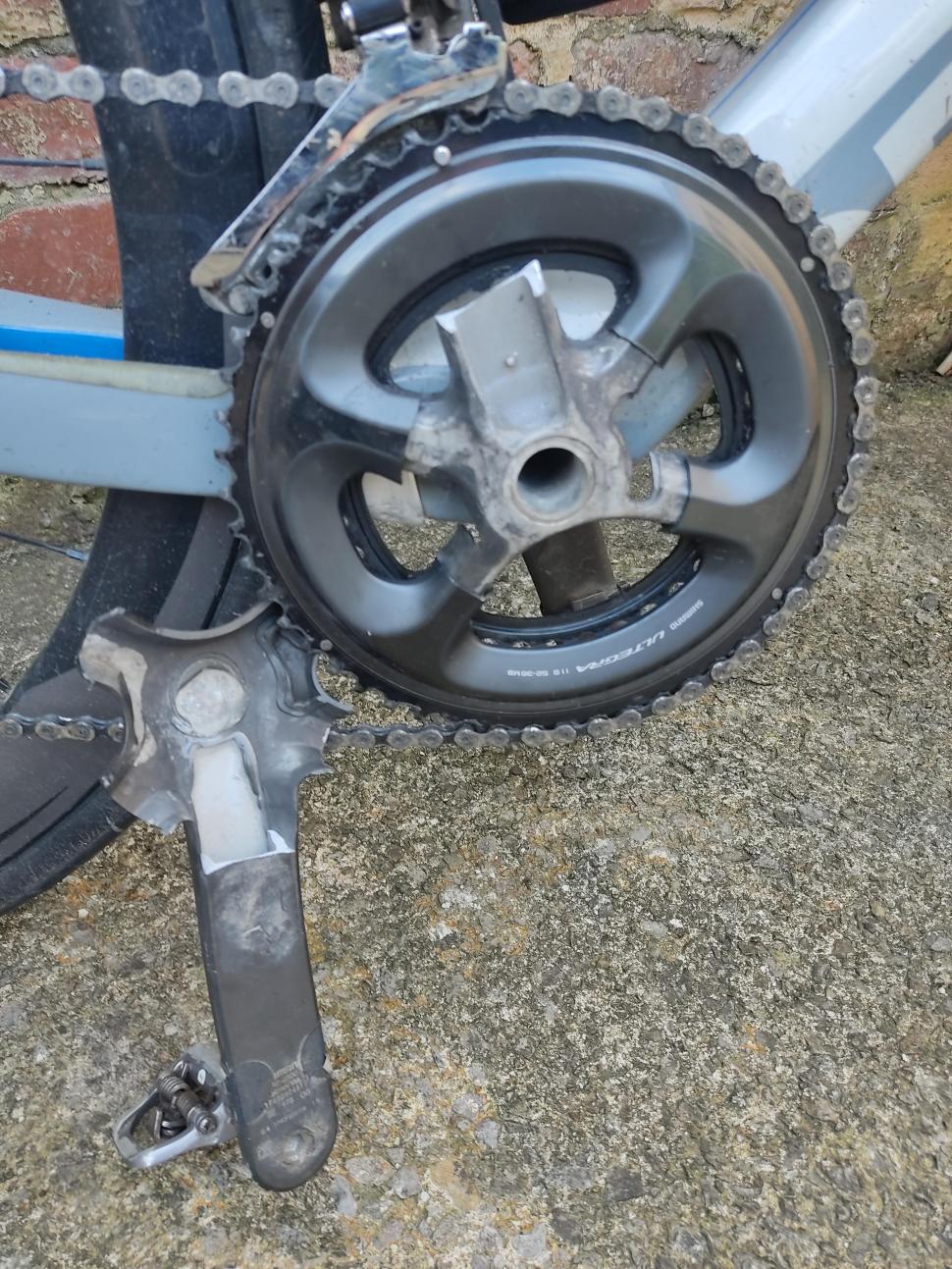

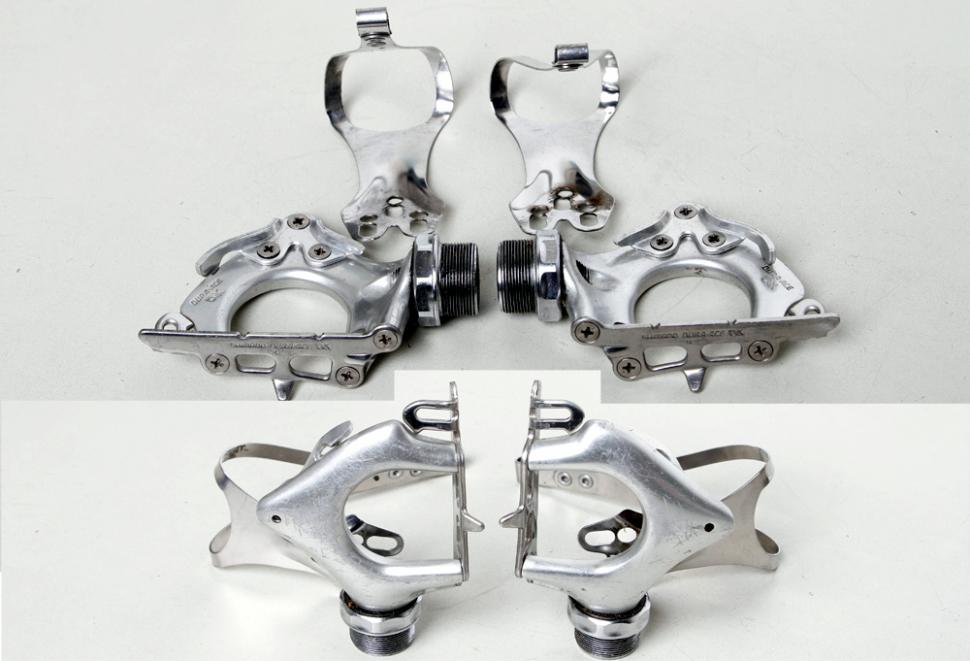
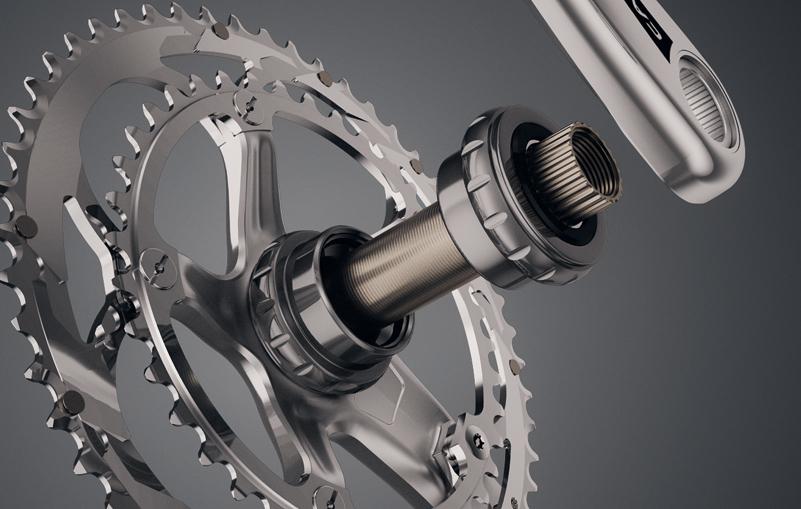
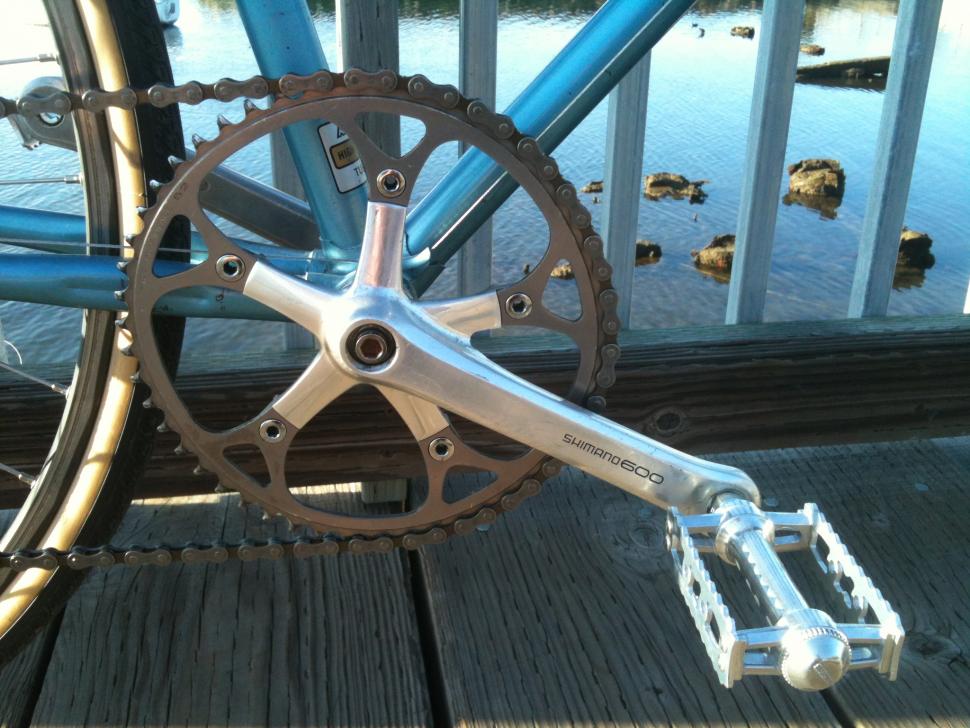
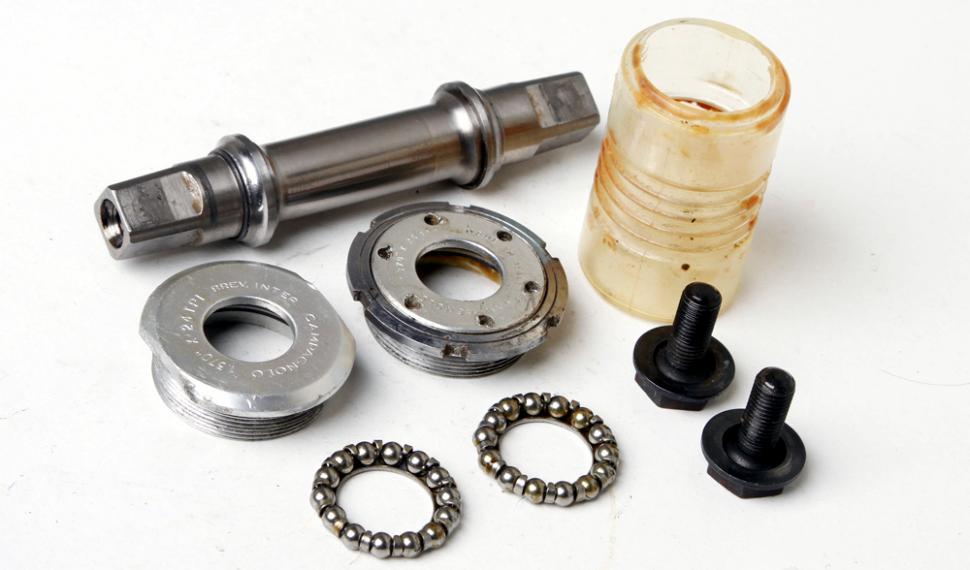
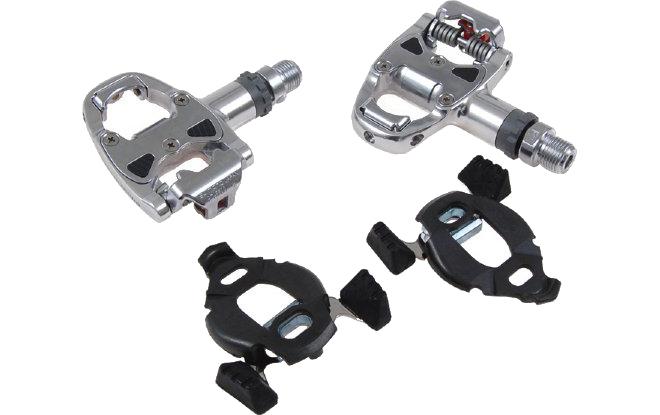
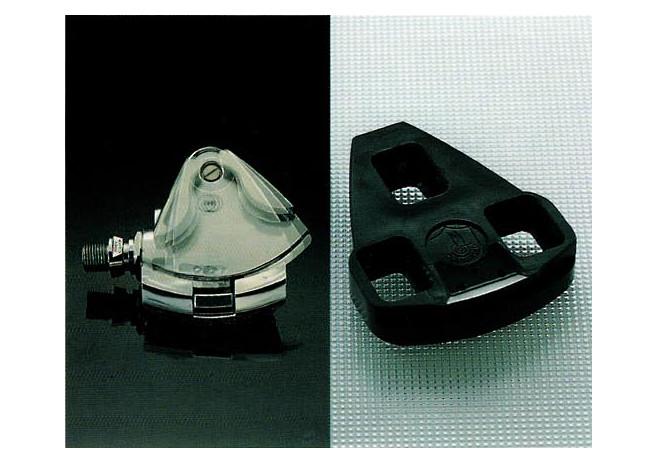
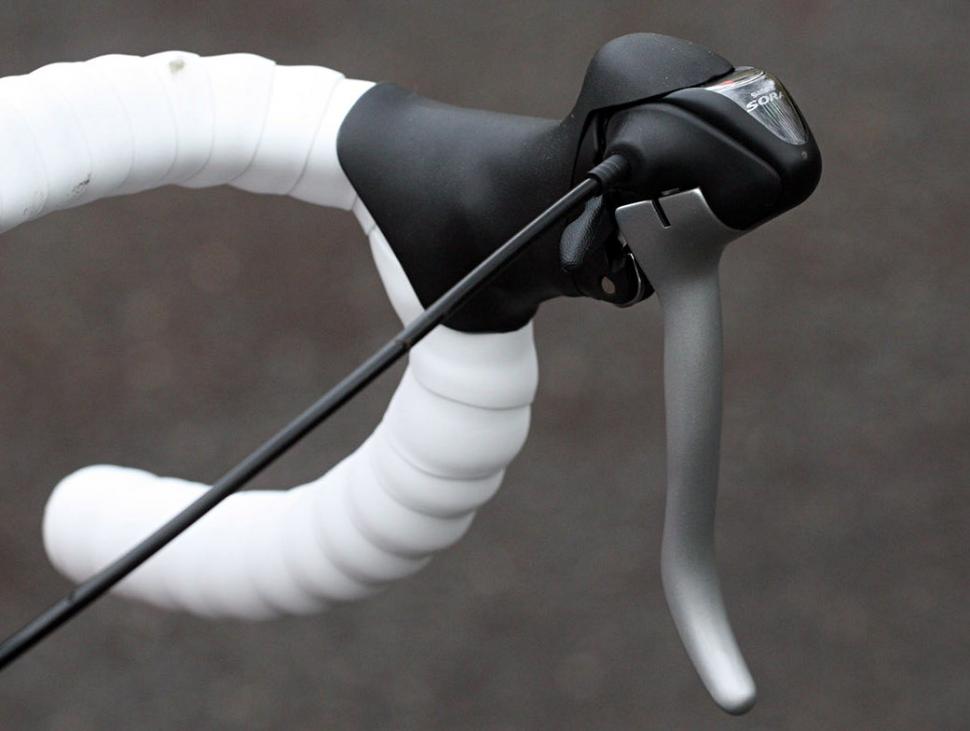
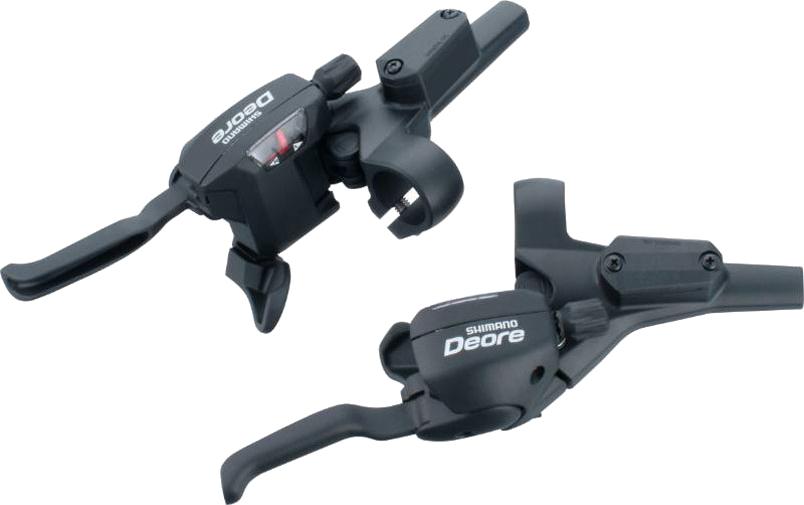
Add new comment
92 comments
Yes my Sora 3400 aren't very usefull when on drops (I can change but it requires a little distraction), but for my commuting/touring duties they are great.
I love Shimano because it makes components cheap enough to fit in a super-market bicycle up to tour-de-France winners. But they do have to start making cheaper brifters.
UT and their berrings are exelent, i've managed run my 1.gen UT Chorus for +8 years and +70000km in scandinavian weather without any maintence. Retired the crank last year for a new UT Chorus 2015. Right side bearing is fine and still without any play, it needs to be regreased though. Left side bearing has play and needs replacement. If had cleaned and regreased it a year before it would still have been rolling as new. (you'd need a wd40 like spray solvent + a simple greasegun to regrease UT bearings)
I only changed the cranset because a new bearring, a bearing puller/workshop cost + two new chainrings would cost me approx 1500 dkr and i found an ebay.de bargin at approx 2000 dkr for an almost unused 2015 crankset sold by a dude who had regretted his chose chainring /armlength choise.
UT just needs a 100% faced and alligned BB for the cups. If installed correctly and your frames BB tolerances is within specs UT stainless steel bearings will outlast any modern crank with external bearings.
reg BB tolerances a cheap china carbon frame might not be ideal - i have a custom handbuild Merlin Works TI CR3/2.5 from 2006 though, everything is dead straight and finished like no other TI manufacture expet Seven/Spectrum. Cost for a frame like that is high though, i think i payed3500€ incl VAT for the frame back in 2006. A similar frameset from Seven or Spectrum would cost 5000$ in 2016 mony... + overseas postage + EU VAT+import tax.
1980's brakes - i doubt it, levers where really bad and ergonomics was shitty which was why servo brakes like CLB2 centerpuls had a decent market - you could use them to stop from the hoods but you'd have to be really carefull not to lock up your wheel.
If you open the 1988 Campy levers quickrelease ypu could use the athena to to brake controlled from the hoods - but they do need a lot of power which is dificult to apply from the hoods.
Shinanos 600Ultegra & DureAce 7400 levers was a huge improvent. I Used the 600 Ultegras with a pair of Mavic 440's (modolo OEM), you could brake those from the of of the lever, however modulation was not nearly as good as the Athena's, neither was max brake power. But they worked ok without applying huge amount of power throug the levers 'funny'.
I actually decended from vesuvio in october with those Athena 1988 brakes with original 27years old brake rubber. Very confident....
Rim's.... those Campy V-profile rims are still some of the best rims out there i you can find the NOS with the correct number of holes. I had a pair of Omega-V clinchers in 1988 and build a pair of Seoul tubulars a 2-3 years ago on a set of shiny Chorus OS hubs from 1999 - they are lovely - lightweight, stiff, strong and very easy to build on with Sapim Race spokes and polyax brass nipples. Weigth endned up at sub 1500g and the y ride like nothing else when paired with a 27mm Pave tub - and quite decent on a sprinter gatorskins. I actually toured the Pyranees in 2014 and the Dolomites in 2015 on that wheelset.
I have ten year old eight speed SORA STIs on my old Klein and they work fine. If you don't spend much time on the drops the thumb button isn't an issue.
I had those Sora shifters on my first CX bike, they were actually really good. CX is different though, there's no really need to shift from the drops since you ride on the hoods far more (excpet when braking on descents). Also, they were so cheap that filling them full of mud or pranging them off a tree wasn't really a problem!
At the risk of turning this into another Shimano vs Campagnolo bore-fest, it's interesting to note that Shimano's cock ups tend to come from attempts to innovate whereas Campag's cock ups come from the need to make it look nice without worrying about how it actually works!
"kevinmorice .......
I have the Sora-style thumb shifters on my road bike and I love them. Especially for touring-style rides and commuting"
another vote here - I only tend to ride on the drops into a headwind - a couple of years ago borrowed my old bike back from a guy I'd sold it to so could ride the Dales TDF route - I was sort of dreading the Sora's - but no problem switching back and actually liked them for some riding styles they function well
looking forward to seeing press fit BB's on the list
You've got to get it wrong before you get it right.
Can't be afraid of making mistakes otherwise you'll never innovate.
That excuses the Austin Allegro and the Morris Marina too!
Really interesting article!!
Gotta disagree about the Sora thumb shifters though - I could change from the drops ok and overall they weren't too bad, if not as good as the normal type.
Re Sora shifters. Nearly everyone i know who rides with drops are up on the hoods a good 90% plus. The rest are racers and they would'nt have looked at them in the first place. As i once read "good utilitarian gear shifters".
Campag's solution for PF BB's works well if you're using Ultra Torque: Metal cups fit snugly into shell and then insert cranks with centre bolt in usual way. No creaking.
Requires an accurately manufactured frame though I suppose, and granted I'm not looking forward to removing them (then again I'm not planning to!)
Had 2 bikes (early 90s) with Biopace chainrings at one time and I have to say they really were not that bad.
Shimao positron derailleurs on the other hand...
I suspect that the old Sora shifters even with the hard to reach button would outlast Campag Veloce shifters by many miles.
Done about 5000 miles on Campag Veloce. Chainrings good, bottom bracket good, derailleurs good, cassette good, shifters rubbish. Using a plastic ratchet and plastic pawl is never going to last very long. About 1500 miles each in my case. Luckily I managed to get some new old stock Veloce Ultrashift shifters with metal pawls and ratchets. Hopefully this will be the last set of shifters I need on this bike before the rest of the stuff wears out and it all gets replaced with 105. Fingers crossed.
what about Shimano Rapid-rise rear mech
AX was a great groupset-way ahead of its time re aerodynamics and bio metrics. One actually pedalled circles with the AX pedals/crankarms (rather than elipses-as we do with standard pedals and round chainrings). Agree with bearing stress and wear though.
It is amazing that people harp about BioPace-The ONLY watt output research I have seen done on them shows to rotate them FORWARD/clockwise and the rider gets more watt output; and I for one was never /am not ever bothered by the sensation; and never ever shy awy from free or nearly free NOS/"taken off when brand new" chainrings for my commuter bikes!!!
Re Ti bottom brackets-on wide BBs no thanks. But on 103mm track bike BBs and 109mm doubles they are fine. anything over 109mm and you get too much shearing force for Ti.
Shimano Capreo 9 tooth (late 1990s)developed primarily for 20" travel bikes proved to wear out quickly AND be poorly inefficent due to the severe chain wrap butI realize you can't risk offending major advertizers who are still marketing these fundamentally flawed but amazingly expensive 9 tooth low cassettes.
Ha ha! Hey, the Deore dual-control MTB shifters. I love em! Maybe on a real mountain bike over rough terrain you could have problems but on my Surly touring bike with flat bars and bar ends they're great. The main advantage is that you can actually change gear from the bar ends by just flicking out a finger, as opposed to moving your hands back to the centre of the bars every time. You can also shift down a chainring while braking by gently pulling up with the fingers of your left hand as you brake. Feels very natural. Finally changing down the cassette from the main handlebar grips doesn't rquire you hook your fingers over the lever and pull up. Instead you just flick a couple of fingers up and hit the underside of the lever. Very quick. Alas thanks to features like this Shimano have stopped making the buggers. So I won't be able to get any more when this lot finally break. Hrumph!
Did you know that if you have a 14mm hex key in a 3/8" square drive socket, you can access the crank bolt on a power torque axle from the drive side. Only takes a simpl box unit over the left hand crank to take it off quite easily.
Did you know that if you have a 14mm hex key in a 3/8" square drive socket, you can access the crank bolt on a power torque axle from the drive side. Only takes a simpl box unit over the left hand crank to take it off quite easily.
I have to disagree there. I could never get my thickly gloved fingers onto the button without interference from the shift cable. They were comfortably shaped hoods though - nice and compact.
For those with older PowerTorque cranks without the self-extracting bolt, the easiest way to get the NDS crank arm off is to carefully unscrew the NDS bearing cup using an open-ended BB wrench. As the bearing cup unscrews from the frame's BB shell, it will pull the crank arm off with it.
Of course, if you have a press fit bottom bracket, you're screwed (no pun intended).
there is a sort of logic behind the madness of biopace...
picture the scene: you're riding quickly along the flat, your cadence is high, your speed is constant. round chainrings mean the chain-speed is also constant, and so is your foot-speed (the speed at which your feet rotate around the BB).
the idea is that it's physiologically (a bit) harder to move your feet through top-dead-centre, because your joints are bunched-up, or something.
the biopace oval slows your feet down for their movement through t-d-c (the axis of the oval is longer at tdc, you need to move the cranks less to pull the same amount of chain - so your feet slow down at top and bottom of the pedal stroke - in theory at least making life a bit more comfortable)
where this completely falls over is climbing a steep hill, where every pedal stroke means a surge in speed - your speed, chain speed, foot speed, are all changing anyway . and your problem is more likely to be the sheer effort of moving your feet through tdc, than the minor problem of it happening too quickly...
like i said, it's only a sort of (mad) logic, and it only applies in some circumstances, and addresses a problem that no-one has ever complained about.
good for a bike bore like me to waffle on about though...
Shimano Dual Control can be used with low-normal too and so installed is very pleasant on a flat-bar bike that's not used on gnarly offroad. It's rather sensitive to correct cable set-up though.
Yes, and they leave enough space that you can fit ski bar-ends inboard of the levers, for tooling along in an aero position. You get some funny looks from the fundamentalists though.
That is mad logic... especially when you consider that cadence is dictated by your leg speed, not the chainset. So you will either slow and accelerate at the top of the stroke, but that has nothing to do with comfort, just the force required to maintain effort.
Modern (and previous) ovalised rings work on the opposite principle; that changing the chain pull will make it easier to maintain a leg speed. The theory being, as mentioned that leverage at the top of the pedal stroke is less than ideal. Infact much muscle fatigue is generated by going over the top.
Looking at the MTB Shifters... I liked the reverse pull mechs, They make sense. You force the mech to close the parallelogram, the spring opens the paralleogram. Where this works is in muddy conditions, where mechs used to get clogged.
Good times.
After a solid 15 years on reverse pull, I finally relented last year... it did take nearly 3 rides to train my brain.
I still use dual control shifters on my mountain bike and I've always got on with them.
Shimano MTB dual control levers were great - on your mate's bike.
Creep up on the right, reach over and tap them a couple of times and ride off laughing
Can we consign all shimano manual gears to the bin, where the brake is also the shifter?!
Great to have that uncalled-for dab on the brakes just as you're on the limit, shifting to an easier cog on a climb ffs!!!
I've used Delta's and Biopace (still have some of the latter rings in the "can't throw that sort of thing away) tool box. The Delta's worked fine, and if you claimed to be a bike mechanic and couldn't set them up, you were undermining yourself. Would be interesting to ride the same bike with some Biopace rings on and some modern ovoidialzagnoal ones and see how much difference there is..
I have SPD-R on my (fixed) commuter bike and it's nice to be secure. Also, unlike SPD-SL (that I have on my other bikes) the cleats aren't made of soft cheese
Still got sora on my winter bike and works fine. Different but fine. How is sora different to campag that also has thumb shifters?
Pages